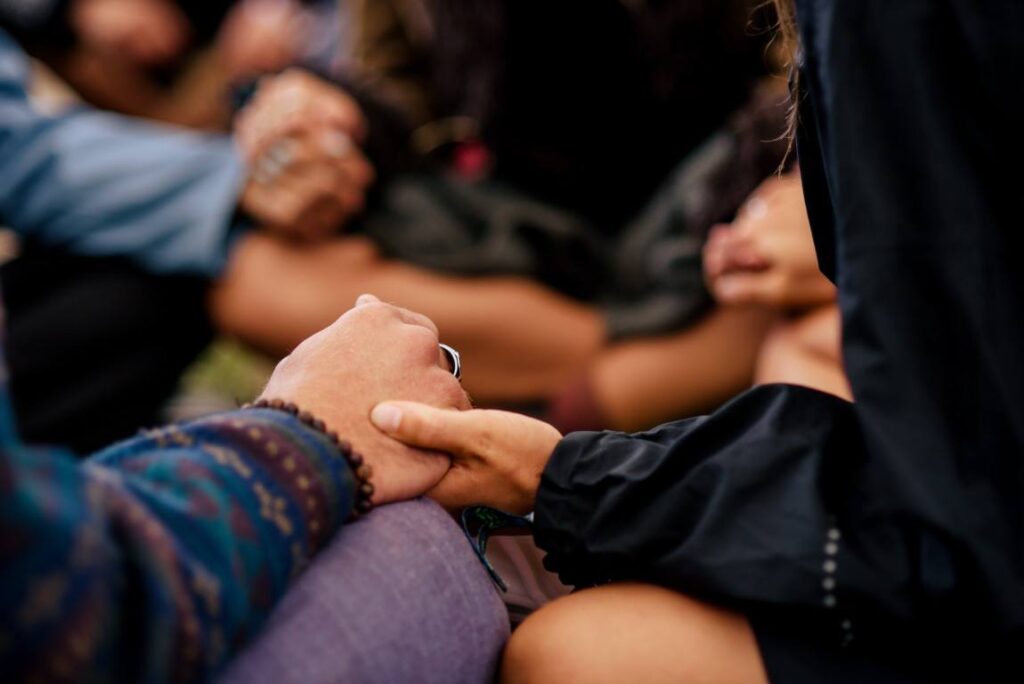AI and the Shift in Human Connection
it’s time we talked about it.
Face-to-face interaction has been steadily declining—a trend that began well before the pandemic and shows no signs of reversing. Meanwhile, the digital spaces where we spend more and more of our time are starting to feel increasingly empty. The internet that once buzzed with human creativity is being hollowed out—comment sections filled with bots, content generated by algorithms, interactions that feel strangely hollow.
It’s getting harder to know what’s real online. That photo could be fake. That video could be fake. That account could be a chatbot. For decades, video footage was the gold standard for evidence that something had occurred. Now we’re backsliding to a pre-photography era where eyewitness testimony matters more than pixels on a screen.
When the internet first showed up, people rejoiced at their ability to connect with others around the world, saying “At long last, I’m not alone!” Now people are logging on and wondering, “Am I alone?”
Because you can’t be sure there’s anyone in there.
It reminds me of a passage from Charlotte Joko Beck’s “Everyday Zen”:
“Suppose we are out on a lake and it’s a bit foggy — not too foggy, but a bit foggy — and we’re rowing along in our little boat having a good time. And then, all of a sudden, coming out of the fog, there’s this other rowboat and it’s heading right at us. And…crash! Well, for a second we’re really angry — what is that fool doing? I just painted my boat! And here he comes — crash! — right into it. And then suddenly we notice that the rowboat is empty. What happens to our anger? Well, the anger collapses…I’ll just have to paint my boat again, that’s all. But if that rowboat that hit ours had another person in it, how would we react? You know what would happen!”
Beck is touching on the Buddhist doctrine of no-self here, which is a discussion for another day, but this parable has so many layers that say so much about humanity and human connection. The only reason we put so much mental energy and attention into our day-to-day interactions and relationships is because we assume we’re relating to other human beings like ourselves. We assume there’s somebody in the other rowboat.
Nearly all of the love, lust, anger, hatred, shame, guilt, passion, enthusiasm, attraction, aversion, delight and disgust we feel from moment to moment throughout this human adventure has to do with other humans. We don’t experience those big feelings toward inanimate objects like rowboats, cars or shopping carts, because we know there’s nobody in them. There’s no real connection to be had with them. Our big feelings come from our meetings with real people, real family, real lovers, real enemies, and real art from real artists.
AI is an empty rowboat, and the more it takes over the internet, the emptier it’s going to feel. People won’t feel like they can find the connection they’re craving in any of the areas that are dominated by artificial intelligence, and they’re going to go looking for it elsewhere. Maybe they’ll start going looking for it in places where there are physical people in physical bodies they can touch and make eye contact with, who they know for a fact are real people with real feelings and hopes and dreams like themselves.
And maybe that would be a good thing. Humanity is becoming too disconnected and dissociated as it is. We could all benefit from digging our roots into reality a bit deeper. There are some technological developments where as an individual you have to draw a line for yourself. Modern civilization has made it possible to work from home and eat ten thousand calories a day without ever exercising or leaving your apartment, but most of us have the good sense not to do this because we know it would be very bad for our health. We’re going to have to start looking at AI the same way we look at McDonald’s: sure it’s there, but that doesn’t mean you have to consume it, because it’s really not good for you.
This is why festivals, gatherings, and live events matter more now than ever before.
People with strong social relationships have an increased likelihood of survival over time. Face-to-face communication activates our brains differently than digital interaction; it allows us to read body language, feel empathy, build trust, and form the deep connections our nervous systems evolved to crave. When we gather in person—at festivals, community events, ceremonies—we create what sociologists call “social capital”: the networks of connection that strengthen community resilience, foster belonging, and enhance collective wellbeing.
Is it fair to say that many of us are increasingly afraid of these very experiences?
Attending festivals and community gatherings significantly increases our sense of belonging, place attachment, and social cohesion. These events create vibrant spaces where diverse groups come together, share experiences, and celebrate. They provide opportunities to practice being present, to feel the collective energy of humans moving to the same rhythm, sharing food, making eye contact, laughing together.
We need spaces that prioritize presence over productivity, love over likes, connection to the earth and ourselves over connection to the cloud.
Perhaps this is the resistance we need: to consciously choose gathering over scrolling, to seek out the rowboats with real people in them. We evolved in community, and no algorithm can replicate the feeling of being seen, truly seen, by another human being. The digital world will keep drifting closer, offering its empty promises. But we still get to choose which boat we climb into.
Passages taken from @caitoz



